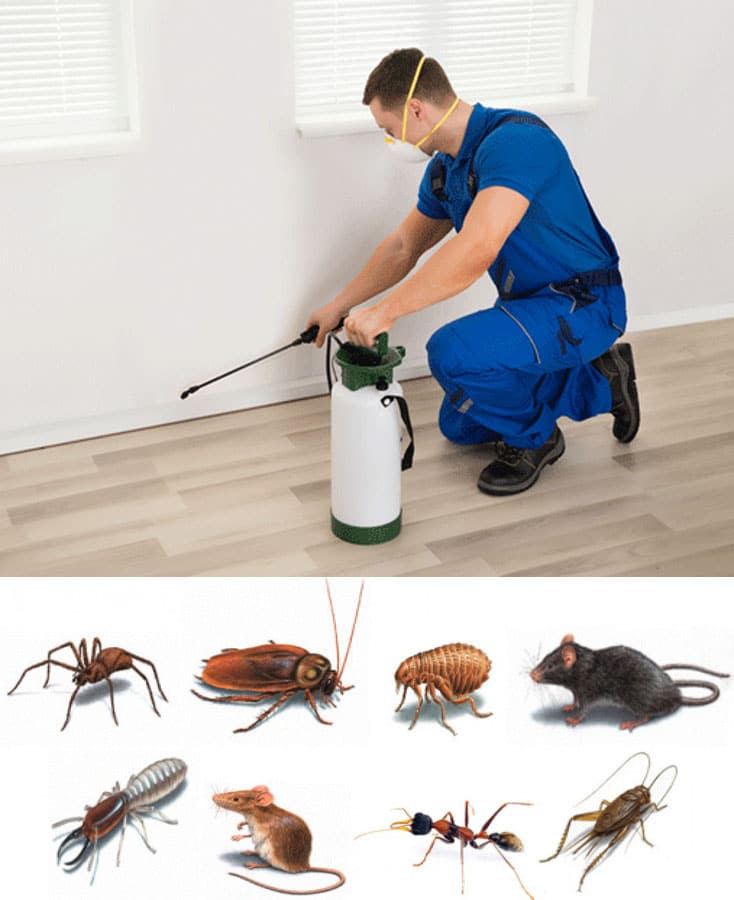A1 Bed Bug Exterminator Charlotte - Specialized Bed Bug Removal
Wiki Article
Bed Insect Treatment Malfunction: Contrasting Chemical Vs. Non-Chemical Solutions
In the realm of bug control, specifically when taking care of the consistent problem of bed pests, the selection between chemical and non-chemical therapy solutions can be a critical one. Both approaches provide unique advantages and disadvantages, influencing variables such as efficiency, security considerations, and overall cost. By checking out the nuanced information of each approach, a more clear understanding of which path to seek in addressing a bed insect invasion can be acquired.Performance of Chemical Treatments
Chemical treatments for bed insect infestations have actually been widely recognized for their powerful and quick effectiveness in getting rid of these parasites. When taking into consideration the performance of chemical therapies, it is vital to understand that they can offer a comprehensive and fast solution to a bed bug trouble. Expert pest control specialists typically count on insecticides to target bed pests at various stages of their life process, including adults, nymphs, and eggs. These chemicals commonly function by interfering with the bed bugs' nerve system, leading to paralysis and ultimate fatality.Furthermore, chemical treatments have the advantage of using residual impacts, implying that they can continue to remove bed bugs also after the preliminary application. This residual action is specifically useful in combating any potential re-infestations. Additionally, the fast action of chemical therapies can bring alleviation to individuals dealing with severe bed bug problems, permitting them to regain control of their living areas quickly.
Security Issues With Chemical Solutions
When utilizing chemical options for bed insect therapy is making sure the security of occupants and the atmosphere,One important aspect that needs careful consideration. While chemical therapies can be reliable in eradicating bed pests, they might posture dangers otherwise handled properly. One of the key safety and security concerns with chemical options is the possible harm they can cause to human wellness. Exposure to particular chemicals utilized in bed bug therapies can result in respiratory concerns, skin inflammation, or other negative responses, especially in individuals with pre-existing conditions or level of sensitivities. In addition, inappropriate application or dosage of chemical pesticides can result in poisonous residues lingering in the cured location, posturing lasting wellness risks to residents.Moreover, the environmental influence of chemical remedies is an additional substantial factor to consider. Some pesticides used in bed bug treatments might be damaging to helpful bugs, wild animals, and communities if they seep right into the dirt or water supply. It is crucial to utilize chemical treatments deliberately, following security guidelines, and thinking about less poisonous alternatives to mitigate these dangers and guarantee the reliable and safe monitoring of bed bug problems.
Advantages of Non-Chemical Methods
Taking into consideration the prospective safety and security worries and environmental influence connected with chemical services for bed bug treatment, checking out anonymous non-chemical techniques presents a promising option with a number of unique benefits. Non-chemical techniques supply a much safer choice for households, especially those with youngsters, pet dogs, or individuals conscious severe chemicals. These strategies eliminate the threats of direct exposure to poisonous substances, decreasing the capacity for damaging wellness effects. Furthermore, non-chemical therapies are ecologically pleasant, as they do not add to air or water contamination, making them a sustainable option for bug control.Additionally, non-chemical solutions can be efficient in targeting bed pests, consisting of hard-to-reach areas where chemical treatments might not penetrate. Methods such as heat treatment, vacuuming, steam cleansing, and mattress coverings give extensive obliteration without the use of dangerous chemicals. Additionally, non-chemical strategies can be much less disruptive, calling for very little preparation and allowing for quicker reentry into treated locations. In general, deciding for non-chemical bed bug therapy approaches not only focuses on safety and security and ecological protection yet also ensures extensive and reliable pest control.
Limitations of Non-Chemical Treatments

Furthermore, non-chemical therapies frequently call for multiple applications to accomplish successful obliteration. This can be lengthy and may not constantly guarantee complete removal of all bed bugs and their eggs, specifically in surprise or hard-to-reach places.
Furthermore, the success of non-chemical treatments heavily relies upon correct application and thoroughness, which can be challenging for individuals without specialist proficiency. Poor application of non-chemical methods might lead to insufficient eradication, leading to consistent invasions and the need for added therapies.
For that reason, while non-chemical therapies have their advantages, it is vital to acknowledge these limitations and consider them when establishing one of the most effective technique for managing bed pest invasions.
Cost Comparison: Chemical Vs. Non-Chemical Options
Offered the constraints linked with non-chemical treatments, an essential facet to evaluate in the context of bed insect management is the price comparison between chemical and non-chemical options. In contrast, non-chemical treatments like warmth treatment or vapor can be much more pricey, with prices ranging from $1,000 to $6,000 for an entire home. While the initial price of chemical therapies may appear reduced, several therapies may be called for to completely get rid of the problem, potentially boosting the overall price.Conclusion

Thinking about the potential safety and security concerns and environmental influence associated with chemical services for bed insect therapy, checking out non-chemical techniques offers a promising choice with several distinct benefits.Provided the restrictions linked with non-chemical treatments, an essential aspect to examine in the context of bed bug administration is the rat pest control price contrast between chemical and non-chemical options. In contrast, non-chemical treatments like heat treatment or heavy steam can be a lot more pricey, with prices ranging from $1,000 to $6,000 for a whole home. While the first price of chemical therapies may seem reduced, several therapies might be needed to completely get rid of the infestation, potentially increasing the overall cost.In final thought, when contrasting chemical and non-chemical bed bug treatment choices, it is important to think about performance, safety, benefits, restrictions, and expense.
Report this wiki page